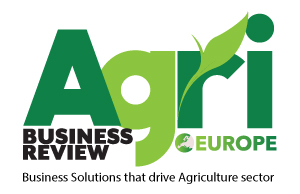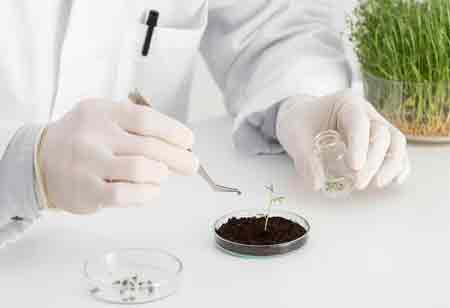Thank you for Subscribing to Agri Business Review Weekly Brief
Harnessing Biotechnology for Supply Chain Optimization in Agri-Food Systems
Biotechnology is revolutionizing global supply chains by enhancing product durability, traceability, and efficiency, thereby reducing waste and improving logistical responsiveness in the agri-food and pharmaceutical sectors.

By
Agri Business Review | Wednesday, October 29, 2025
Stay ahead of the industry with exclusive feature stories on the top companies, expert insights and the latest news delivered straight to your inbox. Subscribe today.
Biotechnology is fundamentally reshaping the global supply chain, transforming it from a series of disjointed steps into a highly integrated, intelligent, and resilient ecosystem. By operating at the molecular level, biotech innovations are embedding information, durability, and value directly into products themselves. This shift is creating unprecedented levels of efficiency, transparency, and waste reduction, particularly within the agri-food and pharmaceutical sectors. We're moving beyond traditional logistics, which focus on the "where," into a new paradigm that also accounts for the "what" and "how" of a product's condition in real time. This biological revolution is optimizing every node of the supply chain, from the point of origin to the final consumer.
Traceability Through Biological Tagging
Ensuring provenance and authenticity across complex global supply chains increasingly relies on the powerful capabilities of DNA barcoding. Much like a supermarket barcode that identifies a product, a DNA barcode uses a short, standardized genetic sequence to identify a species or even a specific batch. This "biological fingerprint" is intrinsic to the organism and is virtually impossible to counterfeit or alter. When a shipment of grain, fish, or fruit arrives at a port, a simple genetic test can confirm its origin and identity with near-perfect accuracy. This guarantees that a product marketed as being from a specific premium region is authentic, protecting both brand integrity and consumer trust.
Beyond identification, specific, non-functional, and safe DNA markers are introduced into a plant's genome. These markers act as covert serial numbers, unique to a particular farm, harvest date, or production line. Unlike an external label, this tag grows with the product. This creates a powerful layer of traceability. A food processor can instantly verify the source of its raw materials, enabling precise inventory management and quality control. In the event of a quality issue, this intrinsic tag enables surgical recalls, targeting only the affected batch rather than issuing a costly, widespread recall that damages consumer confidence. This seamless flow of information, embedded in the product's very biology, creates a transparent and accountable supply chain from seed to sale.
Engineering Resilience: Enhancing Products for the Journey
A significant portion of produce is lost due to spoilage, bruising, and environmental stress during transit. Biotechnology directly addresses these issues by enhancing the intrinsic qualities of products, making them more robust and better suited to the rigors of modern logistics. One of the most significant advancements is the extension of shelf life. Using precise genetic techniques, it's possible to down-regulate genes responsible for ripening and decay, for example, by controlling ethylene production— the hormone that triggers ripening in many fruits and vegetables. An apple or tomato with this trait remains fresh and firm for longer, drastically reducing spoilage in warehouses and on store shelves. This extended window of viability gives suppliers greater flexibility, allowing them to choose slower, more cost-effective shipping methods, such as sea freight, over expensive air freight without sacrificing product quality.
Fruits with thinner skins are prone to bruising and damage, leading to waste. Genetic modification can enhance traits like skin thickness or flesh firmness, making produce heartier and better able to withstand the bumps and jostles of a long journey. This means a higher percentage of the initial harvest reaches the consumer in perfect condition. Simultaneously, biotechnology is boosting nutrient density. Crops can be biofortified to produce higher levels of essential vitamins and minerals, such as Vitamin A in rice or antioxidants in tomatoes. These value-added products are not only more appealing to health-conscious consumers but can also command a higher price, justifying more sophisticated and careful handling within the supply chain.
Optimizing Logistics and Reducing Loss
Post-harvest loss is a massive drain on resources and profitability. Biotechnology offers a dual solution: it reduces the inherent potential for loss and provides the data needed to create more intelligent, more responsive logistics networks.
The primary way biotech reduces post-harvest losses is through the enhanced traits mentioned earlier. When produce is inherently more resistant to pests, disease, and decay, the baseline level of waste plummets. Crops engineered for drought resistance, for example, yield more consistent harvests, making supply planning more predictable and reducing the risk of sudden shortages or gluts. This biological stability at the source creates a ripple effect of efficiency throughout the entire chain.
Crucially, biotech unlocks a new level of information-driven logistics. When products carry intrinsic biological markers, every scan at every checkpoint—from the processing plant to the distribution center to the retail store—builds a rich, real-time dataset. Sensors integrated with this system can track temperature, humidity, and other environmental factors, linking them directly to the batch's unique biological identifier. This data stream allows logistics managers to practice dynamic resource allocation. For instance, if data indicates a particular shipment of avocados is ripening faster than anticipated, it can be automatically rerouted to a closer distribution center to ensure it's sold at peak quality. This transforms the supply chain from a passive, schedule-based system into an active, intelligent network that responds to the real-world conditions of the products within it. This ensures that resources, energy, and labor are all deployed with maximum efficiency, minimizing waste and maximizing the value delivered to the end consumer.
Ultimately, the true revolution lies in the convergence of the biological and the digital. Products embedded with their own unique data are turning the supply chain into a living, intelligent network. This shift from a passive, schedule-based system to an active, data-driven ecosystem enables real-time responsiveness and dynamic resource allocation. The result is a supply chain that is profoundly more efficient, transparent, and resilient. The biological revolution is here, transforming the movement of goods from a complex logistical challenge into a seamless, molecularly optimized flow that delivers higher value, minimizes waste, and secures the future of global commerce.





